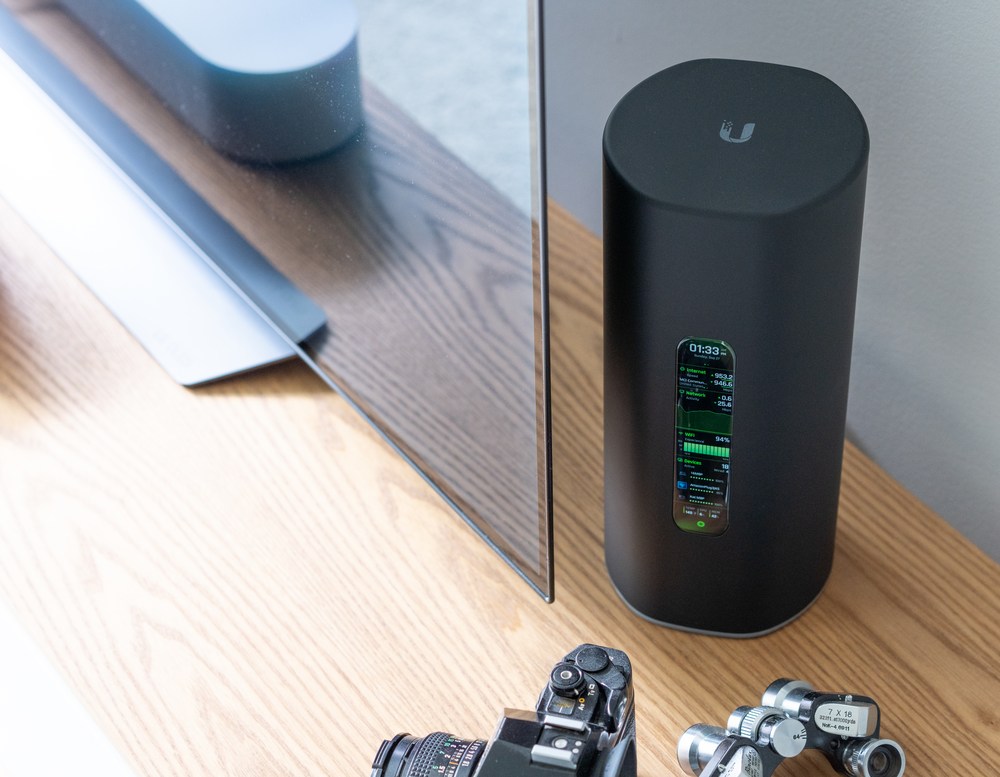Networking
Gigabit ISP, AmpliFi Alien mesh kit and more
First and foremost — my internet connection. I'm very lucky to have gigabit symmetrical fiber via Verizon FiOS. This definitely comes in handy when backing up hundreds of gigabytes of photos and videos after a trip.
I recently migrated away from my Eero mesh WiFi setup (2 base stations and one Beacon) to an AmpliFi Alien Router and MeshPoint. While my place is relatively small, I have had issues with previous WiFi setups that were not mesh-based, like the Apple AirPort Extreme, providing adequate WiFi coverage. These days I would only consider a modern WiFi system that has WiFi 6, is mesh-based and has an advanced mobile app allowing me customize various aspects of my network and the devices on it, including device profiles and guest networks.
I enjoyed my Eero setup (I had Eeros both at my house and my parent's house) and they had a great mobile app, but it wasn't perfect. Each individual base station wasn't terribly powerful so you really had to invest in extra units depending on the layout of your house. This is true with all mesh-based WiFi but with the Eero the max throughput from each individual base station drops dramatically if you aren't very close to them. I really enjoyed the Eero app though, and have setup Eero systems with family due to ease of use. I just had to buy quite a few to cover the entire house.
Joining the @ubnt @AmpliFiHome WiFi 6 bandwagon. ⚡️ More to come once I finally set it up pic.twitter.com/m0CltRNG7d
— Paul Stamatiou 🏡 (@Stammy) August 1, 2020
I decided to move to a different mesh WiFi setup: the AmpliFi Alien router and MeshPoint kit. I had never used any Ubiquiti or AmpliFi products before but heard great things. One of the main reasons I was intriguted in this setup was it's support for WiFi 6.
While WiFi 6 supports a much greater theoretical max (9.6Gbps vs 3.5Gbps for WiFi 5), the main benefit of WiFi 6 is better performance when dealing with many wireless devices on the network.
The AmpliFi Alien (the MeshPoint is a second unit that's almost identical but with no screen) is unlike any other router I've had. It has a touchscreen so you can keep an eye on network status, run speed tests and see connected devices at a glance. It has an internal fan which is nice to see as I know my Eeros always got super hot.
Peformance with the new setup has been great and honestly had me questioning if I even needed more than one unit for my place. When setting up the MeshPoint you have some options for how to connect it to the main Alien router. You can either wire it with Ethernet if you can (what I do) or wirelessly. Here's where the main downside with the Alien comes into play: the Alien doesn't have a dedicated wireless backhaul band for the router and MeshPoint to use to communicate between each other. You can, however, select what band is used for the backhaul: 5GHz for faster speeds or 2.4GHz for extended range.
Finally, the most interesting part of this AmpliFi setup for me is a feature called Teleport. With zero setup you can immediately begin using your home internet connection as a VPN on your devices.
The Alien has a built-in 4-Port gigabit Ethernet switch which was nice to see. However, I try to connect everything possible via Ethernet so I ended up expanding it with some Ubiquiti switches.
Ubiquiti AmpliFi Alien Router and MeshPoint
Advanced Wi-Fi 6 mesh system with a built-in display.
UniFi Flex Mini Switch
5-Port managed Gigabit Ethernet switch. Can be powered by USB-C or POE. It's tiny—great for hiding behind my Synology NAS.
UniFi Switch Lite 8 PoE
8 port Gigabit Ethernet switch with 60W power supply. This thing is meant for controlling and powering several PoE UniFi Access Points but I'm using it as a basic switch for now.

